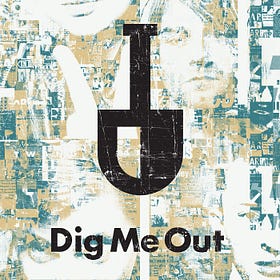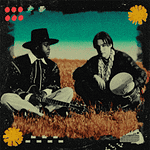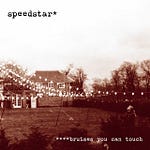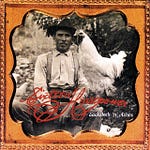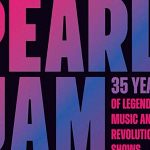It’s 1995, and rock radio is in full identity crisis mode. Kurt Cobain’s ghost still haunts MTV’s 120 Minutes, but the suits are already chasing the next big thing. Green Day and The Offspring have just proven that punk can pay the bills, selling millions with Dookie and Smash. Meanwhile, in Chicago’s smoke-filled clubs, another story is unfolding—one that should have been a hit but somehow slipped through the cracks of a rapidly changing music landscape.
This was the year when alternative rock reached its cultural peak, yet found itself at a crossroads. The raw, chaotic energy that made Nirvana and Soundgarden essential was fading, replaced by a fascinating tug-of-war between authenticity and accessibility. In the Windy City, where post-rock pioneers like Tortoise were already reimagining what guitar music could be, a quartet called Fig Dish was brewing their own brand of musical rebellion—one that would waltz its way into obscurity.
The Scene
Chicago in the mid-‘90s wasn’t just another stop on the alternative rock tour circuit. Unlike grunge-dominated Seattle, the city didn’t have one definitive scene. Instead, it was a bubbling cauldron of musical diversity: the abrasive noise rock of The Jesus Lizard, the quirky pop-punk of Smoking Popes, and the groundbreaking post-rock of Tortoise all called Chi-town home. The Double Door had just opened its doors in Wicker Park in June 1994, providing a new 473-capacity crucible for the city’s burgeoning rock scene.
Into this environment stepped Fig Dish, a band whose very name carried a rebellious secret—it was their Americanized pronunciation of the German phrase “fick dich” (fuck you). These weren’t your typical angst-ridden grunge merchants. They were part of a Chicago scene that included The Smashing Pumpkins, Veruca Salt, and Local H, but Fig Dish brought something different to the table: they actually seemed to be having fun.
The band’s live shows became legendary for their “goofy banter and audience interaction,” embracing what one observer called “a drunken rock club party atmosphere”. They were regulars at the Double Door’s Halloween shows, sometimes featuring guest vocalist Wes Kidd of Triple Fast Action performing “apparently intoxicated and dressed in a pink bunny suit”. In a scene often criticized for taking itself too seriously, Fig Dish dared to crack a smile.
Heavy Hitters Behind the Scenes
When Fig Dish signed to Atlas Records (a subsidiary of PolyGram), they weren’t messing around. The label paired them with producer Lou Giordano, an MIT-educated engineer who had already worked magic with bands like Sugar, The Connells, and Live. This was the same Lou Giordano who would help craft Live’s multi-platinum Throwing Copper, proving he knew how to capture lightning in a bottle.
For mixing duties, they enlisted Tom Lord-Alge, a master craftsman whose resume read like a who’s who of ‘90s rock royalty. Having already worked his magic on everything from Steve Winwood’s Grammy-winning Back in the High Life to the raw power of Live’s breakthrough moments, Lord-Alge brought a precision that could make even the messiest garage band sound arena-ready.
The final piece of the puzzle was mastering engineer Ted Jensen, whose golden ears had already polished classics like The Eagles’ Hotel California and Billy Joel’s The Stranger. In the ’90s, if you wanted your album to sound like it belonged on rock radio, Ted Jensen was your guy.
The Album That Dared to Be Different
That’s What Love Songs Often Do opens with perhaps the boldest statement any rock band could make in 1995: a waltz. “Bury Me” isn’t your typical alternative rock opener—it’s a genuine 3/4 time signature that somehow works within the context of mid-’90s guitar rock. Where other bands were doubling down on drop-D heaviness or pop-punk simplicity, Fig Dish chose complexity wrapped in accessibility.
The album showcases a band unafraid to deconstruct their own ideas. Take “Chew Toy,” which opens with massively distorted bass that sounds like it escaped from a stoner rock album, only to completely shift direction while bringing those heavy elements back in unexpected ways. It’s the kind of musical confidence that suggests a band more interested in crafting songs than following formulas.
Critics took notice. The Morning Call praised it as “an exemplary collection of modern-day Chicago rock,” while Trouser Press noted how the band could “conjure up a potent haze of slacker sloth and then obliterate it with a fierce rock assault”. CMJ New Music Monthly called it “a respectably tight-fisted punch of buzzing guitar caterwaul,” and The Washington Post heard “lively pop-grunge with more than a touch of Nirvana’s swirling feedback and woozy despair”.
The Singles That Never Were
Despite the critical acclaim and major-label backing, Fig Dish faced a fundamental problem: they didn’t have a “Basket Case.” In 1994, Green Day’s breakout single had proven that punk could be both authentic and irresistibly catchy. The Offspring had matched that success with “Come Out and Play” and “Self Esteem”. But Fig Dish’s approach to songwriting seemed almost allergic to the obvious hook.
The band pushed “Seeds” and “Bury Me” as singles, but neither possessed the instant-gratification quality that defined mid-’90s rock radio. Where Green Day delivered three-chord perfection and The Offspring offered anthemic choruses you could shout along with, Fig Dish offered something more subtle—guitar work that rewarded repeated listening, rhythmic complexity that kept you guessing, and melodies that crept up on you rather than grabbing you by the collar.
The Major Label Tightrope
Fig Dish’s story reflects a broader tension in mid-‘90s alternative rock. Record labels, riding high on grunge’s success, were desperately seeking the next big thing. They wanted bands that could deliver both critical credibility and commercial viability—a nearly impossible balance that destroyed countless promising acts.
Fig Dish embodied this contradiction perfectly. They had the songwriting chops, the production budget, and the industry connections. What they didn’t have was the willingness to play the game. As Blake Smith would later reflect, “We were too busy being the underdog Midwestern raging partying guys, and it killed us…. We just weren’t very good at playing the game, and we drank a lot back in those days”.
The band’s most infamous moment came when they “blew their first big chance at a signing when they opted to play an entire set of Neil Diamond covers at an A&R showcase at the now-defunct Avalon nightclub”. In an industry built on image and positioning, Fig Dish chose chaos and humor—a decision that perfectly encapsulates both their charm and their commercial downfall.
The Sound of What Could Have Been
Listening to That’s What Love Songs Often Do thirty years later, it’s striking how well the album holds up. The production captures that perfect mid-‘90s balance of clarity and grit, while the songwriting reveals layers that weren’t immediately apparent in 1995. This is music that benefits from the long view—the kind of album that reveals new details with each listen.
In an alternate universe where rock radio took more risks, where A&R executives valued artistic growth over immediate returns, Fig Dish might have been heroes. Their willingness to open an album with a waltz, to build songs around rhythmic complexity rather than obvious hooks, and to maintain a sense of humor in the face of alternative rock’s increasing self-seriousness feels almost revolutionary in hindsight.
Instead, they remain a footnote in Chicago rock history—a band that was perhaps too interesting for their own good, too willing to color outside the lines of what mid-‘90s alternative rock was supposed to sound like. That’s What Love Songs Often Do stands as a testament to the roads not taken, the sounds that could have shaped the decade if the industry had been brave enough to follow them.
Want to hear the full story behind Fig Dish’s overlooked masterpiece? We dig deep into “That’s What Love Songs Often Do,” exploring every track and unpacking why this album deserves a place in the canon of essential ‘90s rock. The conversation captures both the band’s creative ambitions and the industry forces that kept them from reaching a wider audience—tune in for the complete picture of one of 1995’s most underrated releases.
Songs in this Episode
Intro - Weak and Mean
25:17 - Bury Me
29:29 - Seeds
35:29 - Going Gone
Outro - Chew Toy
Fig Dish | Interview
Emerging from the same mid-90s Chicago scene that saw bands like Veruca Salt, Loud Lucy, Menthol, Triple Fast Action, and Local H get signed to major labels, Fig Dish delivered alternative guitar rock that paid homage to the legends of Mt. Rockmore - Zander, Mascis, Mould, and Westerberg - under the Polygram Records (and subsidiaries) banner. Their disc…
#477: Caviar by Caviar
So many bands got signed to major labels in the 1990s it could keep our podcast going well into the 22nd century. Rarely did artists get a second go-around as a new act, as was the case with vocalist Blake Smith and bassist Mike Willison after the breakup of their band Fig Dish. After recruiting a new guitarist and drummer, they formed
#513: Cattlemen Don't by Triplefastaction
Way back in season number one of Dig Me Out we were joined by an old friend (Chip Midnight, who would become a frequent guest on the show) to discuss one of his favorite bands and albums, the 1996 album Broadcaster by Triplefastaction. During that episode we talked about eventually revisiting the second and final album by the band, 1997's Cattlemen Don'…
#271: Digging Your Scene - Roundtable Discussion on Chicago in the 90s
Last year we had a lot of fun (and learned a lot) during our Australian music of the 90s episode. In fact, we had so much fun, we decided to turn it into new series we’re calling “Digging Your Scene,” where we explore a city or region that made an impact on alternative and indie music in the 1990s.







